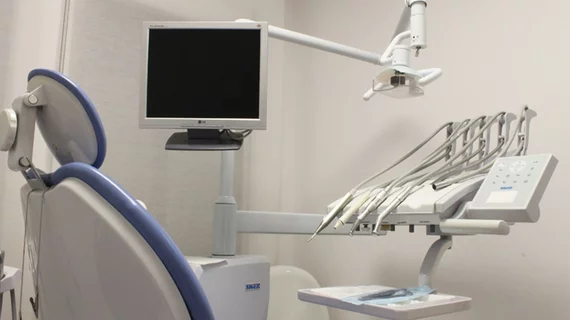Technologies combine to detect, localize and visualize pain signals in the brain
Aided by augmented reality, AI and portable neuroimaging technology, physicians may soon be able to tease out images of patients’ brains—right there in the doctor’s office—to see how much pain each patient is suffering.
Presumably the tech-enabled capability could also help identify patients who are bluffing or exaggerating complaints of pain, a not-uncommon occurrence in the age of opioids.
A feasibility study proving out the portable pain-evaluation concept was conducted at the University of Michigan and is running in the Journal of Medical Internet Research.
Senior study author Alexandre DaSilva, DDS, DMedSc, and colleagues used chilled instruments to bring on mouth pain in 21 volunteers in 20 consecutive tooth stimulations.
While the patients were being thus stimulated, the researchers used portable spectroscopy equipment to obtain optical neuroimages in real time, showing cortical activity as it occurred.
The team decoded the imaging data using a neural network-based AI algorithm they’d developed to classify blood flow in the brain as indicative of either pain states or no-pain states.
Then they tested the algorithm’s performance in several neural-network iterations against patients’ descriptions of pain and other cross-checks.
Further, DaSilva and colleagues tried out the feasibility of rendering the neuroimaging data as augmented reality (AR) features in a simulated environment. This allowed them to visualize functional brain activity on a virtual 3D brain overlaid atop the patient’s head.
Analyzing the results, they found one of their neural-network iterations, a three-layer model, topped 80% accuracy for distinguishing between pain and no pain.
Another test, this one to see how well the algorithm separated pain on the left side from that on the right and from no pain at all, came back with an accuracy score of nearly 75%.
“Additional studies are needed to optimize and validate our prototype … framework for other pains and neurologic disorders,” the authors concluded. “However, we presented an innovative and feasible neuroimaging-based AR/AI concept that can potentially transform the human brain into an objective target to visualize and precisely measure and localize pain in real time where it is most needed: in the doctor’s office.”
The study is available in full for free.

